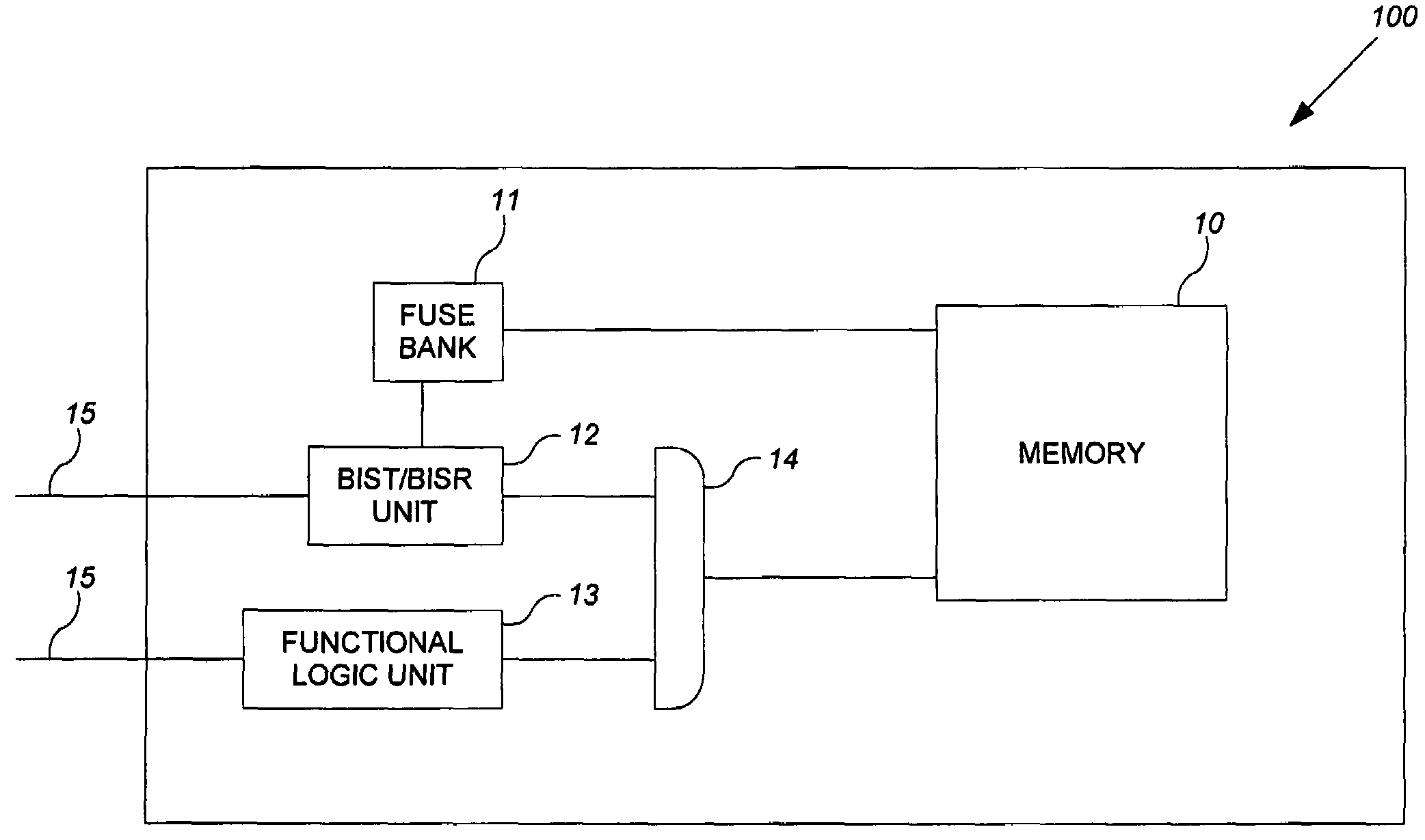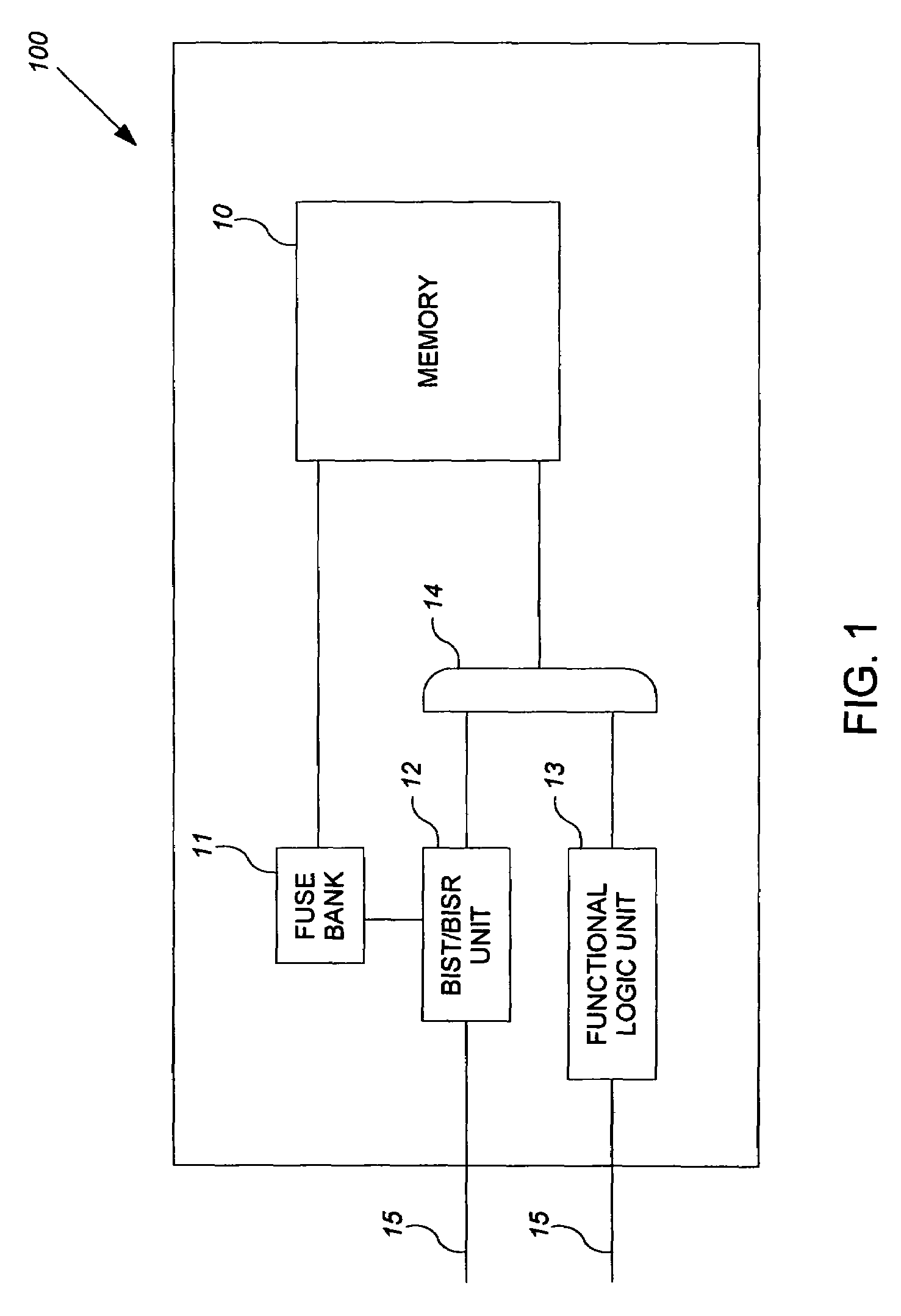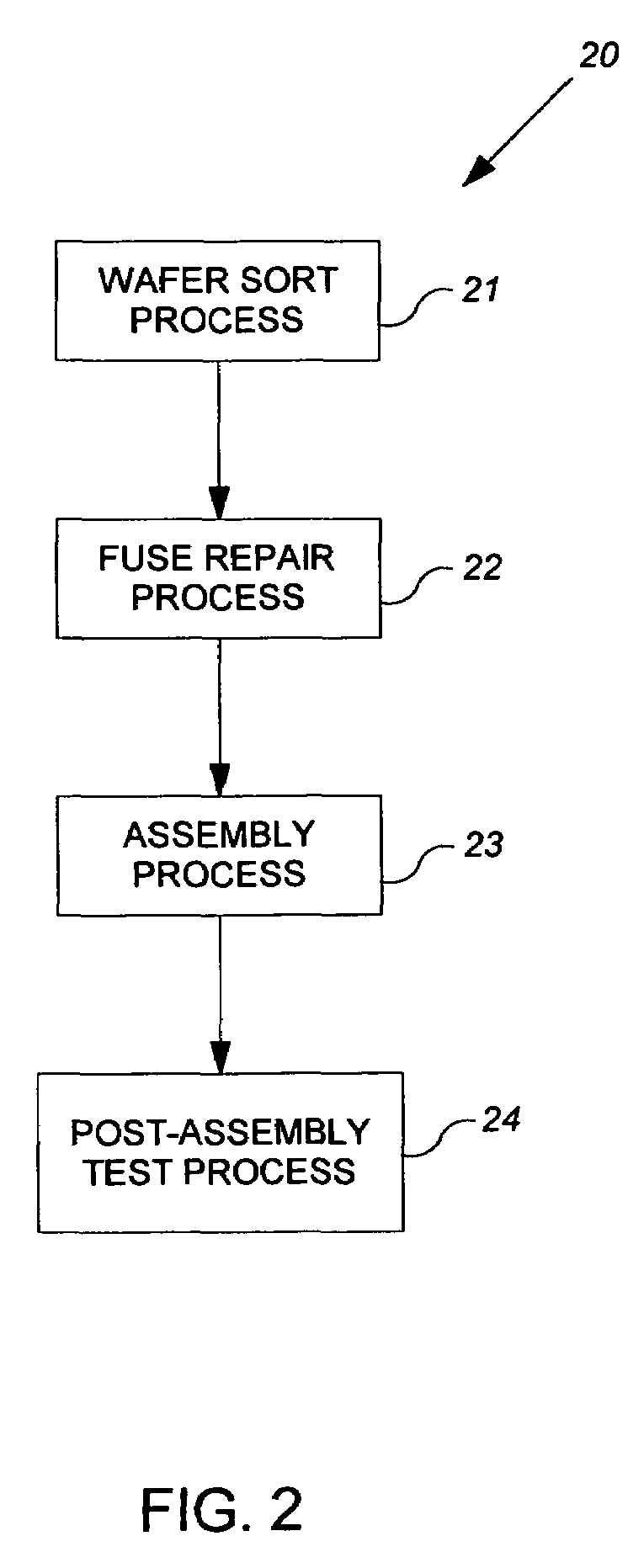Method for testing semiconductor devices having built-in self repair (BISR) memory
a technology of self-repair and memory, which is applied in the direction of information storage, static storage, instruments, etc., can solve the problems of high manufacturing difficulty, large test development cost, and high cost of asic development, and achieves high test development cos
- Summary
- Abstract
- Description
- Claims
- Application Information
AI Technical Summary
Benefits of technology
Problems solved by technology
Method used
Image
Examples
Embodiment Construction
[0018]Referring now to the drawings, and more particularly to FIG. 1, a schematic diagram of an exemplary semiconductor device 100 having BISR memory is shown. In FIG. 1, the semiconductor device 100 comprises a memory 10, a fuse bank 11, a BIST / BISR unit 12, a functional logic unit 13, a multiplexer 14, and input / output terminals 15. For purposes of simplicity, the semiconductor device 100 of FIG. 1 is shown as having only one memory. However, in practice it is contemplated that the semiconductor device 100 may include a plurality of such memories, and other components including some not shown in FIG. 1. Also, the semiconductor device 100 is represented in FIG. 1 in an assembled and packaged form. Prior to assembly and packaging, however, the semiconductor device 100 is embodied as a wafer die that includes the components shown in FIG. 1. Accordingly, reference herein to a “wafer die” or simply “die” refers to a semiconductor device prior to its assembly into a packaged semiconduct...
PUM
 Login to View More
Login to View More Abstract
Description
Claims
Application Information
 Login to View More
Login to View More - R&D
- Intellectual Property
- Life Sciences
- Materials
- Tech Scout
- Unparalleled Data Quality
- Higher Quality Content
- 60% Fewer Hallucinations
Browse by: Latest US Patents, China's latest patents, Technical Efficacy Thesaurus, Application Domain, Technology Topic, Popular Technical Reports.
© 2025 PatSnap. All rights reserved.Legal|Privacy policy|Modern Slavery Act Transparency Statement|Sitemap|About US| Contact US: help@patsnap.com



